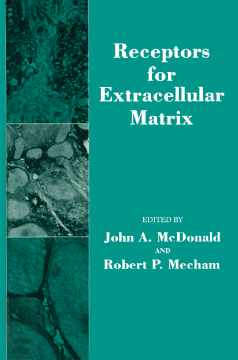
Additional Information
Book Details
Abstract
Receptors for Extracellular Matrix covers the major receptor families and their potential biological functions.
Composed of eight chapters, the book first discusses the structure and function of membrane-associated proteoglycans, focusing on two classes of integral membrane molecules: syndecan and CD44. It then examines the important area of mechanisms of signal transduction from integrin receptors that must mediate the effects of extracellular matrices and other ligands on cell behavior. Multidomain proteins of the extracellular matrix and their role in controlling cellular growth are also considered. This book also discusses the significant research developments in NCAM, the most abundant and widespread of the known vertebrate cell-cell adhesion. The discussion particularly emphasizes the role of posttranslational glycosylation with polysialic acid in the function of the NCAM molecule that undergoes unusual and highly characteristic differences in glycosylation during development. Other chapters deal with the regulation of neural development by the extracellular matrix and the molecular basis of cell adhesion. This book includes discussions on the interaction of adhesion receptors with well-characterized cellular recognition sites and extracellular ligands and cell migration occurring during embryogenesis, gastrulation, neural crest cell migration, neurite extension, lymphocyte migration, and wound healing. The concluding chapters address the wide array of integrin associations, their physiologic relevance and structural aspects, as well as the anchorin CII, a collagen-binding protein of the calpactin-lipocortin family.
This book is of great value to cell biologists and researchers.
